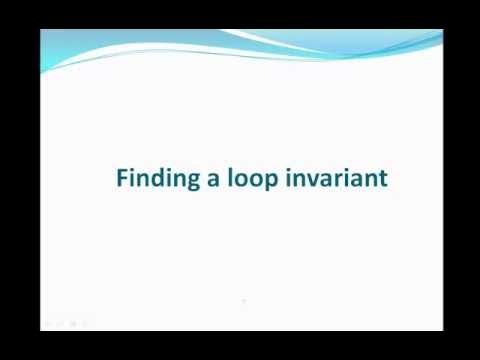Distributed System Design
Summary
TLDR本次讲座深入探讨了分布式系统的概念、优势和设计模式。分布式系统通过多台计算机的集群提高应用的可扩展性和容错性,适用于大数据和高并发场景。介绍了MapReduce框架、无状态与有状态系统、Raft一致性算法等关键组件,以及CQRS、两阶段提交和Saga等设计模式。这些模式有助于简化系统复杂性,提高数据处理效率,但也存在各自的优缺点。讲座强调了在系统开发中采用分布式框架的重要性,以及如何根据应用需求选择合适的设计模式和NoSQL数据库类型。
Takeaways
- 🌐 分布式系统使得开发可扩展的应用程序变得更容易,因为软件应用、数据和文件的增长需要大量存储空间。
- 🔄 当今许多公司使用复杂的分布式系统来处理各种请求和存储需求,以实现应用程序的全面可扩展性。
- 💡 分布式系统的特点是共享和同时操作相同状态的集合,且这些机器可以独立故障而不影响整个系统。
- 📈 分布式系统的优点包括可扩展性、模块化增长、容错性、成本效益、低延迟、高效性和并行计算。
- 🔄 可扩展性意味着应用程序能够通过不同平台工作,并允许与不同类型的系统进行水平通信。
- 🔧 容错性意味着如果一个机器或节点发生故障,其他机器或节点不会受到影响。
- 💰 成本效益表明,尽管分布式系统的初始成本高于传统系统,但由于其扩展能力,它们很快变得具有成本效益。
- 🚀 MapReduce 是 Google 开发的一个框架,用于高效处理大量数据,适用于大数据应用,如在线商店、社交网络站点等。
- 📊 分布式系统设计模式提供了一种构建适合特定用例的系统的方法,它们是允许我们利用现有知识而非从零开始构建系统的构建块。
- 🛠️ 分布式系统设计模式分为对象通信、安全性和事件驱动三类,帮助开发者理解如何构建和设计系统。
- 🔍 选择适合的分布式系统设计模式和NoSQL数据库类型对于系统开发至关重要,需要根据数据类型和所需信息来决定。
Q & A
分布式系统的主要优势是什么?
-分布式系统的主要优势包括可扩展性、容错性、成本效益、低延迟、高效性和并行计算能力。这些系统能够处理大量数据,支持横向扩展,并能在多台计算机之间共享和同时操作相同状态,即使某些机器独立故障也不会影响整个系统。
MapReduce框架是如何帮助处理大数据的?
-MapReduce框架通过将大数据处理划分为更小的部分来提高效率。它使用map和reduce两个阶段:map阶段处理数据并生成中间键值对,reduce阶段则对这些数据进行排序和汇总。这个过程允许用户专注于程序的高级逻辑,而不必关心底层的处理细节。
什么是无状态和有状态系统?
-无状态系统不会保存任何关于过去事件的状态信息,它仅根据提供的输入执行操作。而有状态系统则负责维护和改变状态,这意味着它们会记录用户的操作历史和系统的变化。
Raft协议在分布式系统中扮演什么角色?
-Raft协议在分布式系统中确保复制状态机的正确性和日志的一致性。它通过支持多个连续的共识轮次来实现节点之间的一致性,即使在节点故障的情况下也能保证系统的稳定性。
分布式系统设计模式有哪些主要类别?
-分布式系统设计模式主要分为三类:对象通信、安全性和事件驱动。对象通信模式描述了系统不同组件之间的消息协议和权限;安全性模式处理系统的保密性、完整性和可用性;事件驱动模式描述了事件的生产、检测、消费和系统对事件的响应。
CQRS模式在分布式系统中的作用是什么?
-CQRS(命令查询职责分离)模式通过分离读和写操作来提高分布式系统的可伸缩性和安全性。它使用命令来写入数据,并使用查询来检索数据,这样可以通过命令中心来处理数据的修改,并通过读服务来更新读模型,从而向用户展示变化。
两阶段提交(2PC)协议如何确保分布式事务的一致性?
-两阶段提交(2PC)协议通过两个阶段——准备阶段和完成阶段——来确保分布式事务的一致性。在准备阶段,所有参与的服务被锁定并准备好发送数据;在完成阶段,协调者逐个解锁服务并请求其数据。一旦所有服务都准备好,它们就会被解锁以接受新任务。
Saga模式在处理分布式事务时有哪些优势?
-Saga模式通过事件总线在微服务系统内部进行服务间的通信,每个参与的服务都会创建本地事务,并通过发布事件来触发其他服务的操作。这种模式的优势在于它可以处理更长的事务,适合去中心化的分布式系统,并且减少了瓶颈和来回通信。
为什么说分布式系统对于现代应用程序尤为重要?
-现代应用程序,尤其是在线商店和社交网络站点,需要处理大量数据和请求。分布式系统框架使得这些应用程序能够通过多台计算机的集合来工作,仿佛它们是单一计算机一样,从而提供了可扩展性、高可用性和高效的数据处理能力。
在设计分布式系统时,应如何选择NoSQL数据库类型?
-在选择NoSQL数据库类型时,应考虑数据的特性和所需的信息类型。有多种类型的NoSQL数据库,包括文档型、键值对型、列族型和图形数据库等,选择的依据是数据存储的需求和应用程序的具体用例。
分布式系统设计模式如何帮助开发者?
-分布式系统设计模式为开发者提供了一套标准化的系统设计模型,帮助他们理解如何构建适用于特定用例的系统。这些模式是基于现有知识的构建块,允许开发者从已有的解决方案中汲取经验,而不是从头开始构建系统,从而提高开发效率和系统质量。
Outlines

This section is available to paid users only. Please upgrade to access this part.
Upgrade NowMindmap

This section is available to paid users only. Please upgrade to access this part.
Upgrade NowKeywords

This section is available to paid users only. Please upgrade to access this part.
Upgrade NowHighlights

This section is available to paid users only. Please upgrade to access this part.
Upgrade NowTranscripts

This section is available to paid users only. Please upgrade to access this part.
Upgrade NowBrowse More Related Video

Stanford CS25: V3 I Retrieval Augmented Language Models

CCIR - Quantum Physics: Information, Foundations And Gravity - Lecture Session #2

How Japan Made Their Outlet Safe

"What is a mode?"

ARCH7220/ARTS3220 -- Week 2 Lecture B

Loop Invariants - Principles of Imperative Computation (Carnegie Mellon University)
5.0 / 5 (0 votes)
